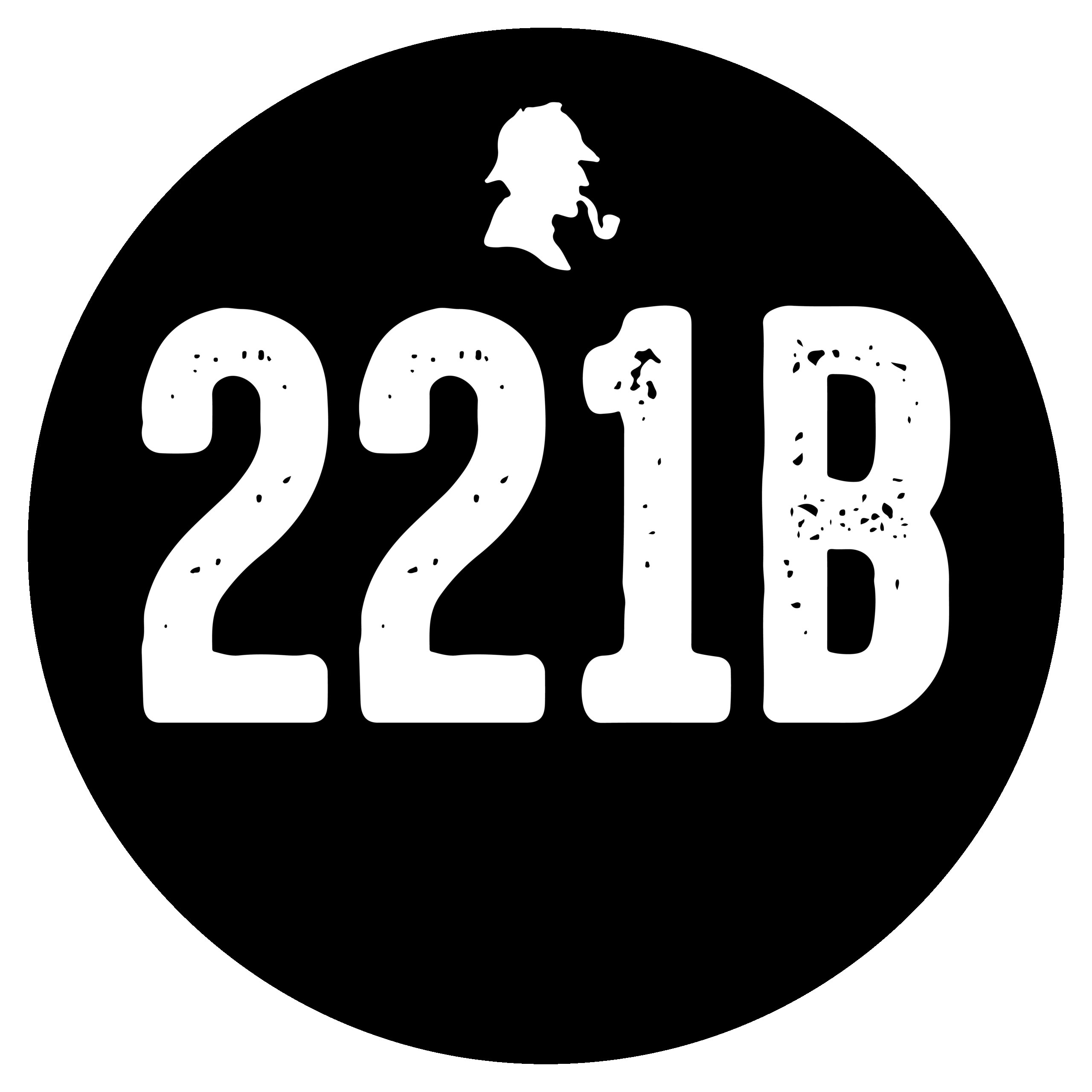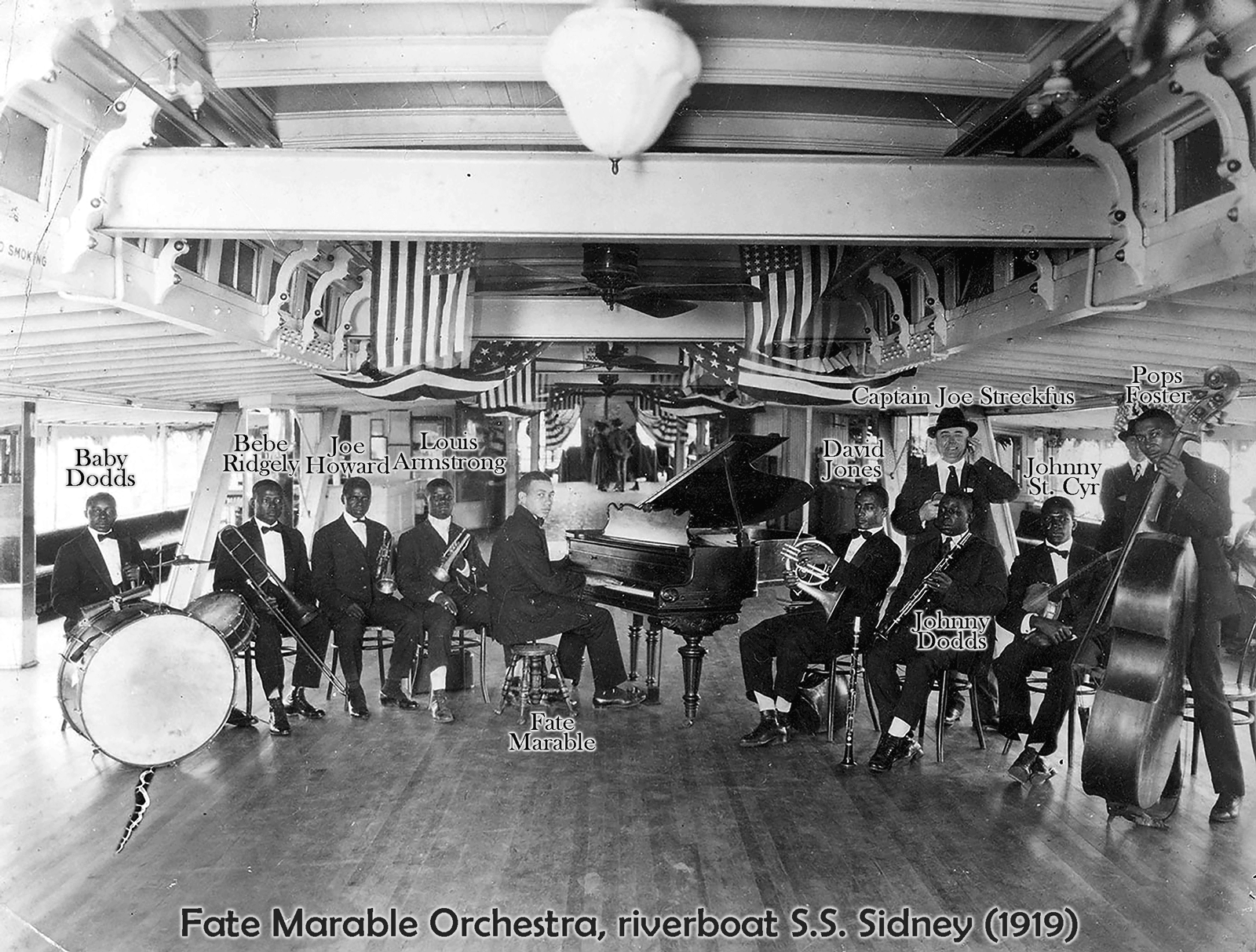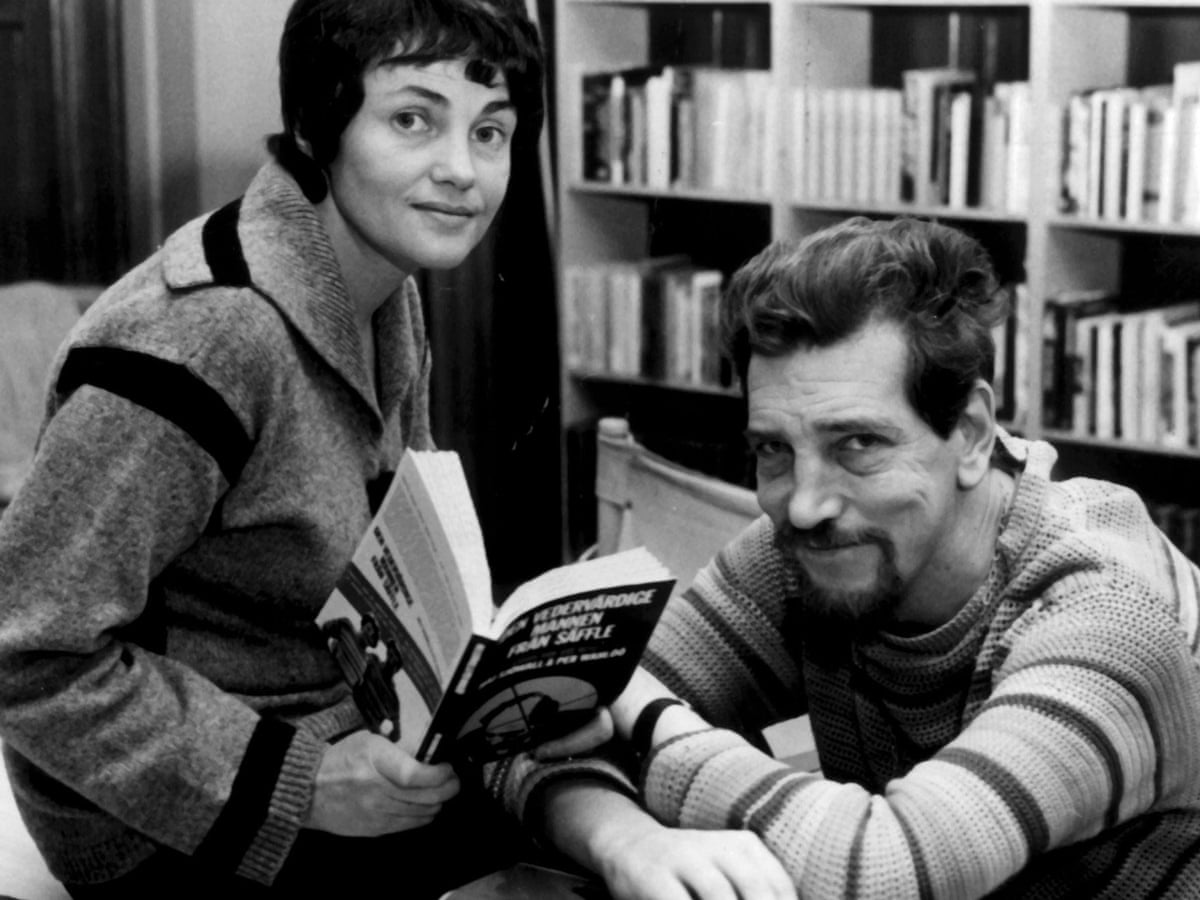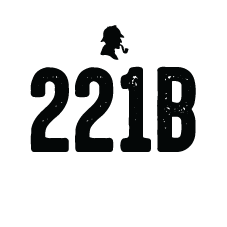Let’s imagine that you woke up in New Orleans today. The year is 1919 and the day is the 16th of March. It hasn’t been more than an hour since the sailors woke up, the grocery boy is just now pulling up the shutter, and you’re reading a frightening but also weird letter on the pages of The Times-Picayune while drinking your coffee. The writer of the letter, called ‘the Axeman of New Orleans’, is the serial killer who has been terrorizing the city since last year’s May.
In his letter written on 13th of May, the Axeman says:
Now, to be exact, at 12:15 (earthly time) on next Tuesday night, I am going to pass over New Orleans. In my infinite mercy, I am going to make a little proposition to you people. Here it is: I am very fond of jazz music, and I swear by all the devils in the nether regions that every person shall be spared in whose home a jazz band is in full swing at the time I have just mentioned. If everyone has a jazz band going, well, then, so much the better for you people. One thing is certain and that is that some of your people who do not jazz it out on that specific Tuesday night (if there be any) will get the axe.
Wouldn’t you become a jazz-lover at least for a day after you read such a letter? I think you would! Well, in his fabulous debut novel The Axeman’s Jazz, Ray Celestin writes about this jazz-lover serial killer who made New Orleans people (including you) run to the jazz clubs, and his murders. We follow the story from three different person’s perspectives: Luca d’Andrea, a former detective who is back in town after 5 years in jail with the allegations of associating with mafia; Michael Tablot, a honest detective who revealed Luca’s association with mafia and led him to the jail; and Ida Davis, a young girl working at the Pinkerton National Detective Agency and a Sherlock Holmes lover who endeavours to become a detective like him. While the story is driven by these three main characters, there are also some interesting side characters involved in the story. Especially three of them play a crucial role: John Riley, a ‘hard-boiled’ journalist from The Times-Picayune; Kerry Hunter, a young police officer whom Michael took under his wing; and, Ida’s only friend, a Dr. Watson for her, Lewis Armstrong. You may know him as ‘Louis Armstrong’. However, he is just 19 years old now, still a talented trumpet player but not famous yet; New Orleans will nurture him up, New Orleans will shine his star… just like it will nurture and shine the Axeman, Luca, Michael and Ida! Aside from all the characters in The Axeman’s Jazz, New Orleans itself is also a character and honestly, the most important one in the story. This narrative is mainly driven by New Orleans; a city built on swamp, a city where people from various races disgust each other, a city in the dark hands of the mafia, but also a city where the music never stops. That’s why we will not look at what Ida or Michael or Luca listened to, instead we will look at what New Orleans listened to while it was being terrorized by the Axeman.
“At the turn of the century, New Orleans was a witches’ cauldron of peoples and races,” says Joachim E. Berendt in his famous The Jazz Book. I think there isn’t a better definition for New Orleans at the early times of jazz. Ray Celestin’s greatest mastership in The Axeman’s Jazz is his success in portraying this ‘witches’ cauldron’ with all its social tension in a distinctive cinematographic style. While reading the novel, you may suspect that there is a screen in your mind! In The Axeman’s Jazz, we see an authentic New Orleans going through a plot that always keeps its tension. Thanks to the authenticity of the narration, New Orleans’ music which had been born of its ‘cauldron’ starts coming to our ears while we follow the story.
Almost everyone thinks that jazz was born in New Orleans. In fact, New Orleans is not the only hometown of jazz. When jazz arose for the first time with ragtime, there were various towns in which similar sounds had been played. Yet ragtime wasn’t actually a jazz style but an individual genre since it was based on notated compositions and had not left that much room for improvisation. But, in time, it started to take some jazzy steps and opened the door slightly to jazz, and at this point we see a spectacular guy named Jelly Roll Morton who once declared that he created jazz music. He was not the creator of jazz music – there isn’t any music invented by only a single person anyway -, but according to Berendt, Morton was “among the first musicians to liberate themselves from the strictures of the composer-imposed interpretation of rags and take a more free and jazzlike approach to melodic material”. Ben Harney, who popularized ragtime, was from Kentucky; and one of the greatests masters of the genre Scott Joplin was born in Sedalia. But Mr. Morton was born and grew up in New Orleans, and maybe that’s why New Orleans is usually regarded as the hometown of jazz. Although it is not totally true, it is a crystal-clear fact that New Orleans made jazz more visible for the music industry. It was New Orleans’ music and entertainment community that brightened jazz music across the Almost everyone thinks that jazz was born in New Orleans. In fact, New Orleans is not the only hometown of jazz. When jazz arose for the first time with ragtime, there were various towns in which similar sounds had been played. Yet ragtime wasn’t actually a jazz style but an individual genre since it was based on notated compositions and had not left that much room for improvisation. But, in time, it started to take some jazzy steps and opened the door slightly to jazz, and at this point we see a spectacular guy named Jelly Roll Morton who once declared that he created jazz music. He was not the creator of jazz music – there isn’t any music invented by only a single person anyway -, but according to Berendt, Morton was “among the first musicians to liberate themselves from the strictures of the composer-imposed interpretation of rags and take a more free and jazzlike approach to melodic material”. Ben Harney, who popularized ragtime, was from Kentucky; and one of the greatests masters of the genre Scott Joplin was born in Sedalia. But Mr. Morton was born and grew up in New Orleans, and maybe that’s why New Orleans is usually regarded as the hometown of jazz. Although it is not totally true, it is a crystal-clear fact that New Orleans made jazz more visible for the music industry. It was New Orleans’ music and entertainment community that brightened jazz music across the US. At the very beginning of the 20th century, there were tens of bands cheering up the streets of this ‘witches’ cauldron’.
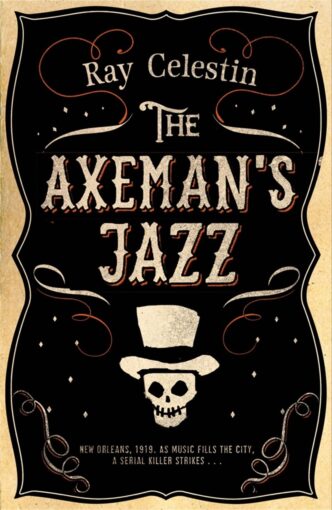
Oh, don’t suppose that all these bands were black bands. Actually, it’s wrong to use the term ‘black’, because even black people were not monolith at that time! There were Afro-Americans who are called “Negros” (and it was how they were called those times) in Celestin’s novel, and there are Creoles that had come to America with their French owners. Afro-Americans were extremely poor. They had been freed from slavery after the Civil War, however their freedom had remained unfulfilled. On the other hand, Creoles had gotten their freedom years and years ago. They were earning money by trade, they owned properties, and they looked down on ‘Negros’ who were propertyless. And the white people… Well, everybody was in New Orleans at those times: Italians, Irish, Brits, Spaniards… In The Axeman’s Jazz, we encounter all of them and we easily perceive the tension between them. At one point, Lewis – who is a ‘negro’ as you probably know – even gets beaten along with Ida in the Irish district of New Orleans. However, we should not forget that this ‘ragbag’ is one of the reasons which makes us love jazz. Jazz is neither a black music in the strict sense nor a white music. And New Orleans? Well, it is a city that black and white jazz bands “travelled through the city on bandwagons” and contested with each other when they encountered on the streets; and it is a city that created Louis Armstrong despite all its interracial tension. Don’t you think New Orleans deserves an appreciation at least for this? Louis Armstrong means so much!
But, really, what’s the role of this man who revolutionized and popularized jazz music with his weezy singing and his unique trumpet playing style – which inspired almost every trumpet player from Charlie Parker to Miles Davis – in The Axeman’s Jazz? We encounter him instantly at the very beginning of the story, playing his trumpet in a funeral band. They play the famous hymn “Nearer, My God, to Thee” written by Sarah F. Adams and composed by Lowell Mason, followed by a dance music called “Oh! Didn’t He Ramble?” (which was later covered by Louis Armstrong) and a jazz standard called “High Society”. At the end of this scene, they also play the intro of “The Beer Barrel Polka”. However, the narrator must have made an error in terms of music history because the song in question was composed by a Czech composer, Jaromir Vejvoda, in 1927, and nobody in the United States knew it until it was recorded by the Andrew Sisters in 1939. Anyway, let’s go back to the scene: As the band marches on, Lewis sees his friend Ida Davis in the crowd. He approaches her and never leaves her throughout the novel after that. Moreover, in this narrative where reality and fiction are intertwined, young Louis Armstrong, while being part of a fictional adventure, brightens his star in accordance with historical reality. Lewis, as he was called from 1919, plays in the orchestra of a steamship sailing the Mississippi River in the novel. Fate Marable is the head of the orchestra. In fact, it is risky for him to have young Armstrong in his orchestra. Because, following the closure of Stroyville, the city’s entertainment and prostitution center, in 1917, there are strict rules in steamboats, the only place where jazz musicians could earn smart money, and one of these rules is that the musicians in the band must be able to read sheet music. However, our dear Lewis is not very skilled at this. Fortunately, he is skilled at playing what he hears as if he reads it from a sheet, and no one from the audience can recognize that he doesn’t know how to read sheet music. Thus, Mr. Marable takes him under his wing and even starts teaching him to understand musical notation. All of the things we see in The Axeman’s Jazz is actually the same in reality. Armstrong first played with Marable’s orchestra on a steamboat in 1918, and learned a lot from Marable until he went to Chicago in 1922 to join the great King Oliver’s band. Armstrong’s family ties are also given in the novel with their historical facts. I think the most exciting detail is that Ida Davis, one of the three main characters of the novel, was actually Louis Armstrong’s childhood friend!
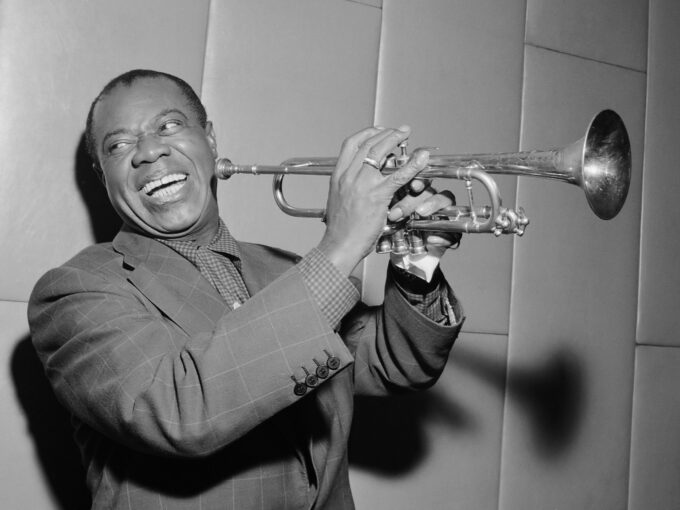
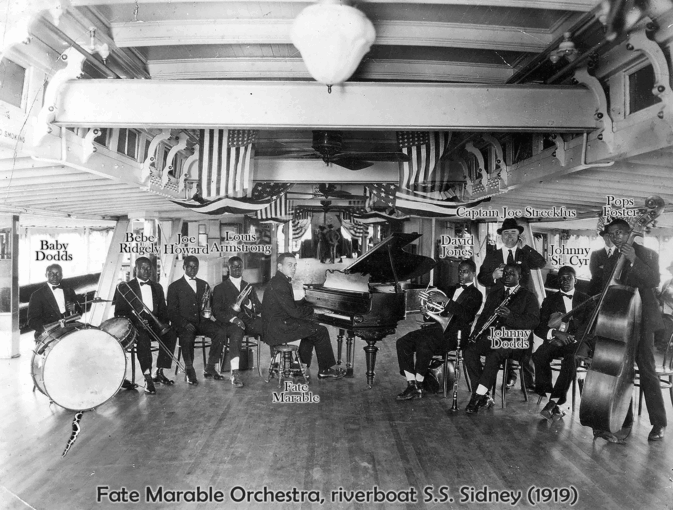
While we keep up with Louis Armstrong’s youth just like watching a documentary, his fictional journey where he becomes Ida’s Dr. Watson seems to go on in a totally separate way. Armstrong’s music life or his family do not play an important role in his adventure with Ida, until that night when everyone willing to survive listened to jazz because of The Axeman’s letter. That night, for the first time, fictional Armstrong and real Armstrong meet so obviously. Performing a special gig for that night at a club with Marable’s orchestra, the young Armstrong blows the gems he had in him just like Pompeii when they start playing the song “Tiger Rag” originally by the Original Dixieland Jazz Band in 1917. He gives people something that they haven’t heard before. At this moment, which is a kind of representation of the rising of his stardom, he plays a trumpet solo “picking out tones he would never normally pick”, and sets the place on fire: “The sound of the cabaret came flooding back first – people were screaming, grins on their faces, others were staring at him open-mouthed.” Ida is also in the audience. But soon, when Lewis’ solo is just over, Ida gets in trouble. I won’t tell what happened afterwards in order not to kill your curiosity about the novel altogether, but the door where everything is solved is this scene where Armstrong shakes off with his solo. In a sense, New Orleans enlightens a series of murders that dragged it into darkness with its own music… Does it really? Well, it’s up to you to read the novel and find it out!
As we come to the end of the article, let me state that The Axeman’s Jazz is actually the first adventure of a trilogy. As they set their feet on the second adventure, Michael and Ida’s path reaches to another city: Chicago. Interestingly, Louis Armstrong’s next stop after New Orleans would be Chicago (in fact, many jazz musicians get on the train to Chicago as Storyville closed) and jazz music would witness how the Armstrong legend grew.
You may think that I’ve over-talked about Armstrong… Do not get angry with me! You will write about the music of a novel, Louis Armstrong will exist as an active character in the narration and you will mention Armstrong in just a few sentences. Who can dare to commit such a sin? The axeman will come at your door and ring your bell, by god! Nevertheless, I want to end my article by sharing a list of all the songs mentioned in the novel, in order not to be unfair to the other composers and musicians. You can also consider this a ‘New Orleans playlist’:
- “Tiger Rag” (1917), lyrics/music: D.J. La Rocca (Original Dixieland Jazz Band)
- “Nearer, My God, to Thee” (19th century) lyrics: Sarah. F. Williams, music: Lowell Mason
- “Oh! Didn’t He Ramble?” (1902) lyrics/music: J. Rosamond Johnson, James Weldon Johnson ve Bob Cole
- “High Society” (1901) music: Porter Steele
- “The Beer Barrel Polka” (1927) music: Jaromir Vejvoda
- An aria from the opera The Barber of Seville
- “Pauvre Petite Mam’zelle Zizzi” (?) lyrics/music: anonim
- “Jazz Baby” (1919), seslendiren: Marion Harris, lyrics: Blanche Merrill, music: M.K. Jerome
- “The Mysterious Axman’s Jazz (Don’t Scare Me Papa)” (1919), lyrics/music: Joe Davilla
- “Brown Skin Who You For?” (1915), lyrics/music: Clarence Williams and violinist Armand J. Piron
- “Kiss My Funky Ass” (?), lyrics/music: ?
Written by Onur Bayrakçeken, this article titled What Did New Orleans Listen to While Chasing the Axeman? was featured in 221B’s December 2021 issue.
